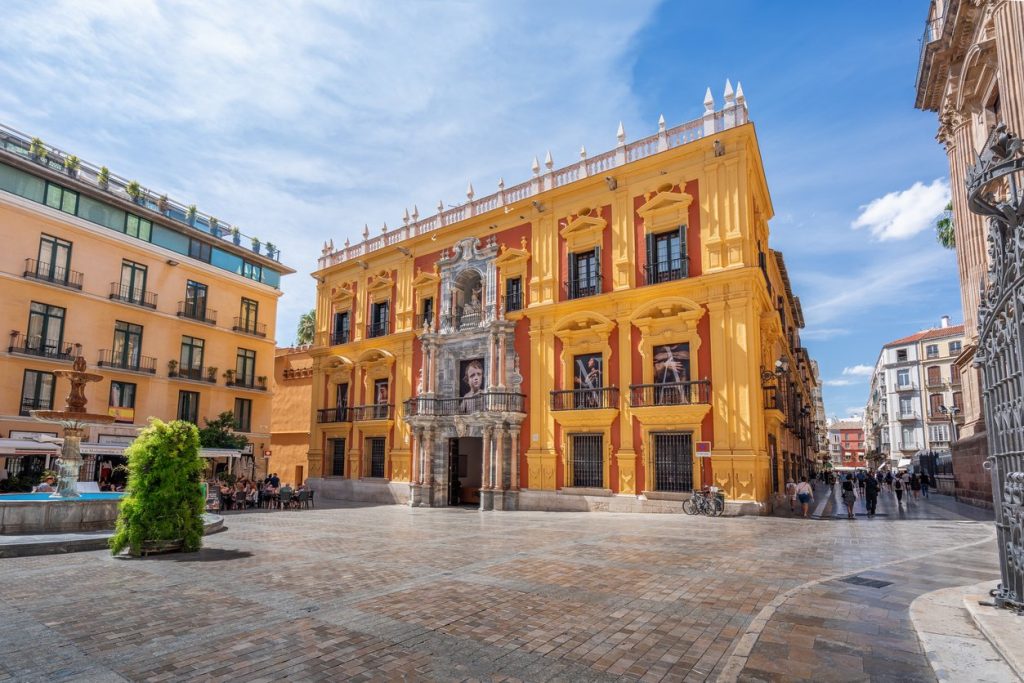CENTRO CULTURAL FUNDACIÓN UNICAJA
EPISCOPAL PALACE
(16th – 18th century)

«The Episcopal Palace is the name given to a group of buildings that make up a large block between calle Santa María, calle Molina Lario, calle Salinas, calle Fresca and Plaza del Obispo.
It is a conglomerate of different buildings of different shapes and styles that have undergone numerous transformations over the centuries, depending on their use. Part of this group of buildings currently houses the Diocesan Museum and is used as an exhibition hall.
The construction of the first Episcopal Palace is attributed to the Obispo Diego Ramírez de Villanueva de Haro, between 1500 and 1525 and its facade would have been located opposite the entrance to the Cathedral’s Patio de los Naranjos.
This palace soon became too small, and the Obispo and Friar Bernardo Manrique ordered a new one to be built, in what is today calle Santa María. One of the most important works carried out in this initiative in 1541 was the construction of a central patio and two towers connected by a gallery comprised of brickwork Mudejar style arches, still conserved today.
In 1558, Diego de Vergara, Master architect of the neighbouring Cathedral, was entrusted with the construction of a central patio and the extension of the living quarters.
Of particular interest in the ensemble are the interior Imperial style staircase, and the patio, where Renaissance elements merge with others of Mudejar tradition. On the second and third floors there are a series of round arches and stilted arches, respectively, the latter installed during a post-war reconstruction.
The Baroque facade, facing the Plaza del Obispo, dates back to 1772 and has Doric columns forming three sections that contain an alabaster image of Nuestra VIrgen de las Angustias by Ortiz de Vargas, as well as a stone coat of arms.»
Diputación Provincial de Málaga
